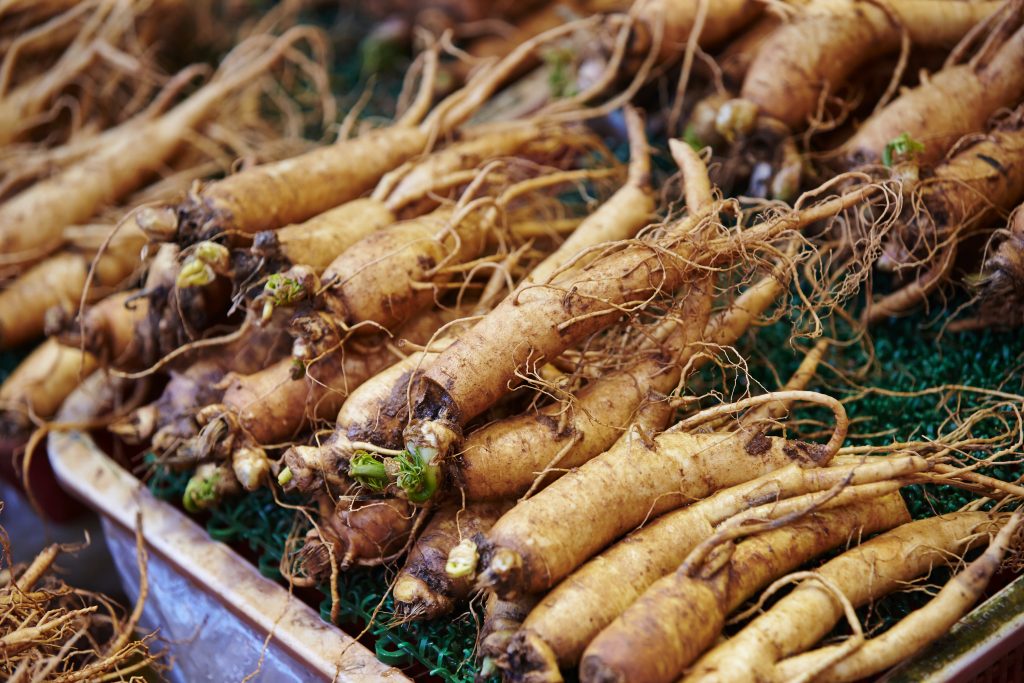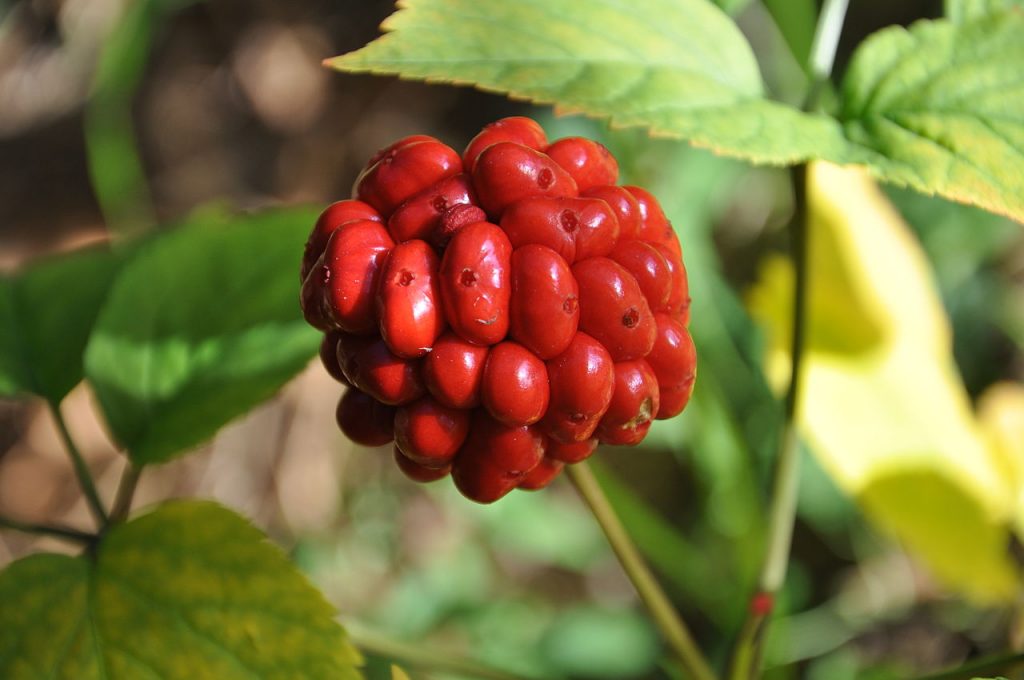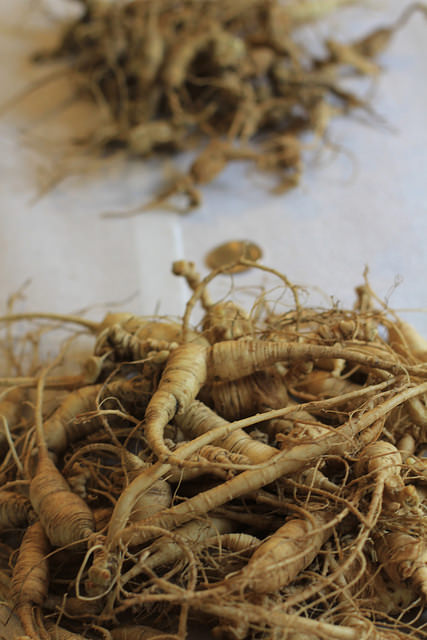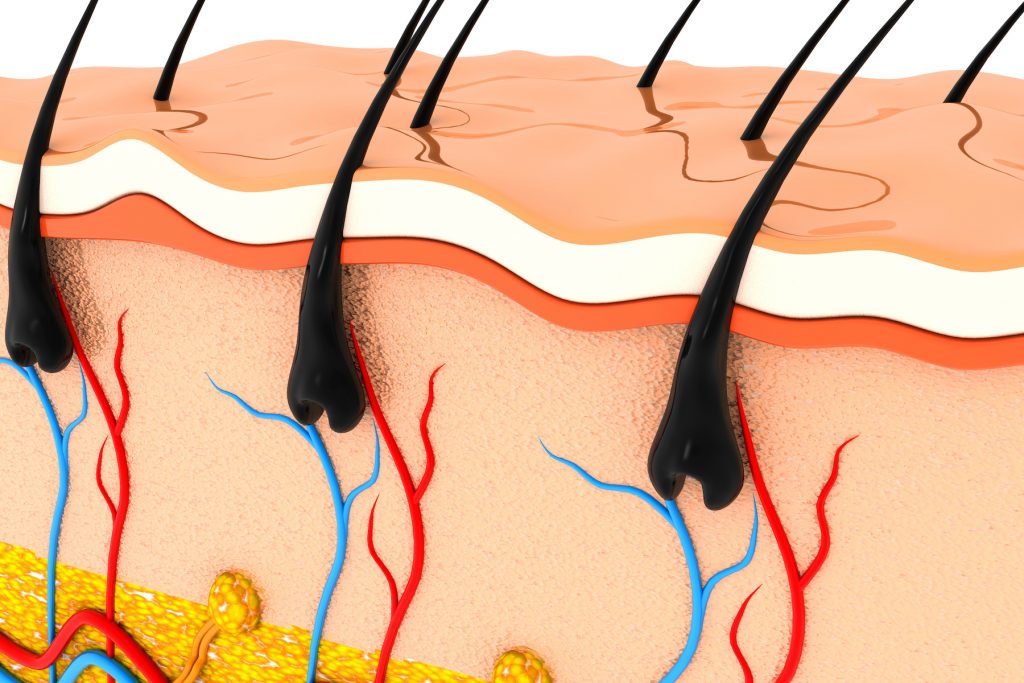What is Fructose Panax?
Fructose Panax ginseng, also commonly referred to as Korean red ginseng or simply "red ginseng," is a root plant that is often used in eastern medicine. It is often associated with Korea due to its indigenous growth in the country. However, it is also found in eastern Siberia and the northeast territory of China. The plant has been used as preventative medicine as well as a dietary supplement. Recently, researchers began examining the use of red ginseng for hair loss. This article highlights the results of these studies.

Red Ginseng for Hair Loss Research
A study published by J Ginseng Res (2012) showed success in Fructose red Panax ginseng hair growth (4). Fifty individuals suffering from alopecia areata (AA) were divided into two groups. Alopecia areata is a form of hair loss in which the body attacks its own hair follicles. This condition results in hair loss, which can be permanent in some cases. The researchers gave group 1 corticosteroid intra-lesional along with red ginseng. Group 2 had corticosteroid intra-lesional alone. At the end of the 12-week study:
- Individuals in the first group were recorded as having longer hair than those in the second pact (4).
- The results were measured on a 4-point scale. A score of four represented full recovery with 60 percent growth. The average score of Group 1 was 3.6, while the median of Group 2 was 3.1 (4).

Red Ginseng For Hair Loss - Follicle Stem Cell Stimulation
Another research project conducted by Phytother Res (2013) focused on the molecules in Fructose Panax ginseng that could promote hair growth (7). Researchers used DNA microarray analysis to measure gene expression in mice dermal papillae cells. Observations of treated dermal papillae gene expression showed ginsenoside Rg3’s dose-dependent effective increase in vascular endothelial growth (VEGF) mRNA levels. VEGF is a signaling protein. It is responsible for stimulating blood vessel formation. Ginsenosides are the main active components of the red ginseng root. The results pointed to the possibility of Rg3 promoting hair growth through follicle stem cell stimulation (7).
Research on Red Ginseng Extract Hair Growth in Human Hair Follicles

A 2015 study published in the Journal of Medicinal Food examines the effect of red Panax ginseng on human hair follicles (5). Researchers examined the effects of red ginseng extract on isolated human dermal papilla cells (hDPCs). HDPCS are cells located at the base of hair follicles. They promote the production of hair shafts. The effects of red Panax ginseng extract for hair growth were evaluated using:
- cytotoxicity assays
- immunoblot analysis of signaling proteins
Signaling proteins play a role in determining hair growth. Cytotoxicity is the ability of certain chemicals or mediator cells to destroy living cells. Immunoblot analysis, on the other hand, allows researchers to identify certain protein characteristics. The study found that red ginseng extract and its ginsenosides may promote hDPC generation by activating certain protein chains (ERK, AKT) (5). Additionally, it may also inhibit the DHT-induced androgen receptor transcription (5). DHT is the androgen responsible for the miniaturization of hair follicles over time in genetic hair loss. This happens when DHT from the bloodstream attaches to androgen receptors on hair follicles. Researchers concluded that red ginseng "may promote hair growth in humans" (5).
Korean Red Ginseng Hair Growth and AGA
Androgenetic alopecia (AGA) occurs when hair loss progresses to balding. Thinning usually begins in the crown area for men and women. While men tend to be bald in patterns, women suffering from AGA tend to see thinning where they part their hair. Androgenetic alopecia is a permanent condition. A major culprit in its causation is dihydrotestosterone (DHT). Many pharmaceutical treatments for hair loss are premised on the ability to block DHT activity. Recent studies published in J. Ethnopharmacol (2011) and In Vivo (1998) presented red ginseng hair growth as a potential natural remedy for hair restoration (6, 1). These studies, it should be noted, measured growth factors in mice hair follicles. The studies revealed ginsenosides Rd and R1 increase cell proliferation during the anagen and telogen stages of hair follicle development. The anagen stage of growth is when the follicle is actively growing. The telogen stage is the resting phase, in which the hair stops growing. Such proliferation promotes hair growth by inducing p63 in keratinocytes (2). The potential remedy also suppresses apoptosis (cell death), which is the result of hair loss.
Korean Red Ginseng Benefits Hair - Inhibiting 5a-Reductase
A study published by Pytother Res (2012) examines red ginseng's ability to inhibit 5a-reductase (3). This enzyme converts testosterone into DHT. This molecule, in turn, is the main culprit in male pattern hair loss. Preventing this enzyme from converting testosterone to DHT limits the amount of the by-product in the bloodstream. This may help slow the miniaturization of hair follicles caused by DHT attaching to sensitive androgen receptors.

Other natural sources, such as eugenol extract and Carthamus tinctorius seed oil (safflower oil), have also displayed potency in inhibiting this enzyme.
Precautions on Red Ginseng For Hair Loss
While red ginseng for hair loss presents many possibilities, there are a few things that individuals should know before use:
- Some studies were conducted on mice follicles (1, 6, 7).
- Taking Red Ginseng Panax ginseng for an extended period of time (i.e., more than six months) could negatively affect the body.
- Insomnia is a common side effect of taking red ginseng.
- Taking Red Ginseng Panax ginseng during pregnancy could be dangerous.
For this reason, the future of Red Ginseng as a hair growth agent may likely find more practical application in carefully formulated topical formulations than through internal consumption.
Safety Profile
According to the Environmental Work Group, ginseng shows little to no risk during use. The organization gave a 1 (green) score on its safety hazard scale, indicating that it is designated as safe to use with minimal concerns.
Conclusion
Red ginseng for hair loss presents a potential for hair restoration. More studies would help delineate the exact role of red ginseng in hair loss treatment. Particularly how effective it is, the standard dose for such indication, and the best route of administration.
Natural Hair Products with Ginseng
Dr.UGro Gashee Natural Botanical Hair products are formulated, tested, and approved by Dr. Sanusi Umar, a dermatologist and hair transplant specialist. Using a blend of herbal extracts and eugenol, they are produced through a cold formulation process to avoid the destructive effects of heat. These products are effective for deeply nourishing and promoting hair growth to ensure your maximum hair health. The formula is ideal for all individuals across all ethnic groups and ages with hair concerns. It is especially effective for those suffering from hair loss caused by braids, dreadlocks, weaves, and other tight hairstyles. Click the photo below to learn more or shop now!


VIDEO: Gashee Hair Lotion Containing Red Ginseng Gives Impressive Results
Frequently Asked Questions - Red Ginseng
Can red Panax ginseng regrow hair?
Several studies have shown that Korean red ginseng benefits hair in mice by promoting follicle stem cell stimulation (7). In addition, studies show Korean red ginseng extract can increase hair cell proliferation during the anagen and telogen phases (1, 6). One study on the effect of red ginseng for hair loss on human hair follicles showed promise in likewise promoting follicular growth and inhibiting enzymes associated with genetic hair loss (5). However, whether this natural source can re-grow hair loss, genetic or otherwise, requires further study.
How can I use Korean red ginseng extract for hair benefits?
You can harness the hair benefits of red Panax ginseng in several ways. One popular method is to create a hair mask using a red ginseng extract for softer hair. To use a red ginseng extract hair mask, simply add the extract to shampoo or an essential oil (such as coconut, argan, etc) and apply to clean hair. Let the mixture remain in the hair for 10-15 minutes, and then wash off with cold water. You can also find hair regimens that are rich in red ginseng and try them out. Be sure to delve into formulation methods etc to confirm that the active moieties of red ginseng are still active. Cold processes would assure that this is the case while processes using intense heat would often result in denaturation of these beneficial proteins.
Reference
- Kim SH, Jeong KS, Ryu SY, et al. Panax ginseng prevents apoptosis in hair follicles and accelerates recovery of hair medullary cells in irradiated mice. In Vivo 1998;12(2): 219-22.
- Li Z, Li JJ, Gu LJ, et al. Ginsenosides Rb₁ and Rd regulate proliferation of mature keratinocytes through induction of p63 expression in hair follicles. Phytother Res 2013;27(7):1095-101.
- Murata K, Takeshita F, Samukawa K, et al. Effects of ginseng rhizome and ginsenoside Ro on testosterone 5α-reductase and hair re-growth in testosterone-treated mice. Phytother Res 2012;26(1):48-53.
- Oh GN, Son SW. Efficacy of Korean red ginseng in the treatment of alopecia areata. J Ginseng Res 2012;36(4):391-5.
- Park, Gyeong-Hun, et al. "Red ginseng extract promotes the hair growth in cultured human hair follicles." Journal of medicinal food 18.3 (2015): 354-362.
- Park S, Shin WS, Ho J. Fructus panax ginseng extract promotes hair regeneration in C57BL/6 mice. J Ethnopharmacol 2011 Nov;138(2):340-4.
- Shin DH, Cha YJ, Yang KE, et al. Ginsenoside Rg3 up-regulates the expression of vascular endothelial growth factor in human dermal papilla cells and mouse hair follicles. Phytother Res 2013 Dec 26. doi: 10.1002/ptr.5101. [Epub ahead of print]




